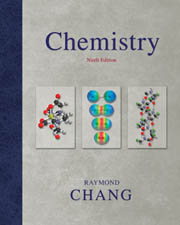Chemistry (Chang), 9th EditionChapter 6:
ThermochemistryChapter Summary1. Energy is the capacity to do work. There are many forms of energy and they are
interconvertible. The law of conservation of energy states that the total amount of
energy in the universe is constant.
2. A process that gives off heat to the surroundings is exothermic; a process that
absorbs heat from the surroundings is endothermic.
3. The state of a system is defined by properties such as composition, volume,
temperature, and pressure. These properties are called state functions.
4. The change in a state function for a system depends only on the initial and final
states of the system, and not on the path by which the change is accomplished.
Energy is a state function; work and heat are not.
5. Energy can be converted from one form to another, but it cannot be created or
destroyed (first law of thermodynamics). In chemistry we are concerned mainly
with thermal energy, electrical energy, and mechanical energy, which is usually
associated with pressure-volume work.
6. Enthalpy is a state function. A change in enthalpy ΔH is equal to ΔE + PΔV for a constant-pressure process.
7. The change in enthalpy (ΔH, usually given in kilojoules) is a measure of the heat
of reaction (or any other process) at constant pressure.
8. Constant-volume and constant-pressure calorimeters are used to measure heat
changes that occur in physical and chemical processes.
9. Hess’s law states that the overall enthalpy change in a reaction is equal to the sum
of enthalpy changes for individual steps in the overall reaction.
10. The standard enthalpy of a reaction can be calculated from the standard enthalpies
of formation of reactants and products.
11. The heat of solution of an ionic compound in water is the sum of the lattice
energy of the compound and the heat of hydration. The relative magnitudes of
these two quantities determine whether the solution process is endothermic or
exothermic. The heat of dilution is the heat absorbed or evolved when a solution
is diluted.  | 
















